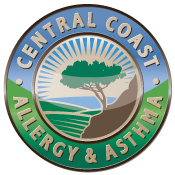Species of Alternaria may be saprophytic on organic matter, or parasitic on higher plants, growing frequently on vegetation such as grasses or grains.Alternaria alternata (Alternaria tenuis Nees) is a cosmopolitan saprophyte, although it is rare in arctic or alpine regions. Satisfactory substrates are found in the soil, on foods, and on textiles. Rotting wood, wood pulp, and compost are common sites. It is one of the most common mold spores found in dwelling dust in both North America and Europe. It favors damp spots, although much of indoor concentrations may derive from outdoor primary sources.1 Ideal temperatures are 25 to 28° C, but it may grow between 2 and 32° C.
Brown segmented mycelia give rise to simple or solitary conidiophores, which may produce solitary apical spores, or a string of spores. Despite their large size, spore dispersal may be for hundreds of miles from the source. Counts of Alternaria are greatest on dry, windy days, in the range of 500 to 1,000 spores per cubic meter, in grass- or grain-growing areas.
Abstracted from Richard Weber,, M.D., Annals of Allergy, November 2001.
Use of this web site indicates the user's agreement to be bound by the "Terms of Use."
